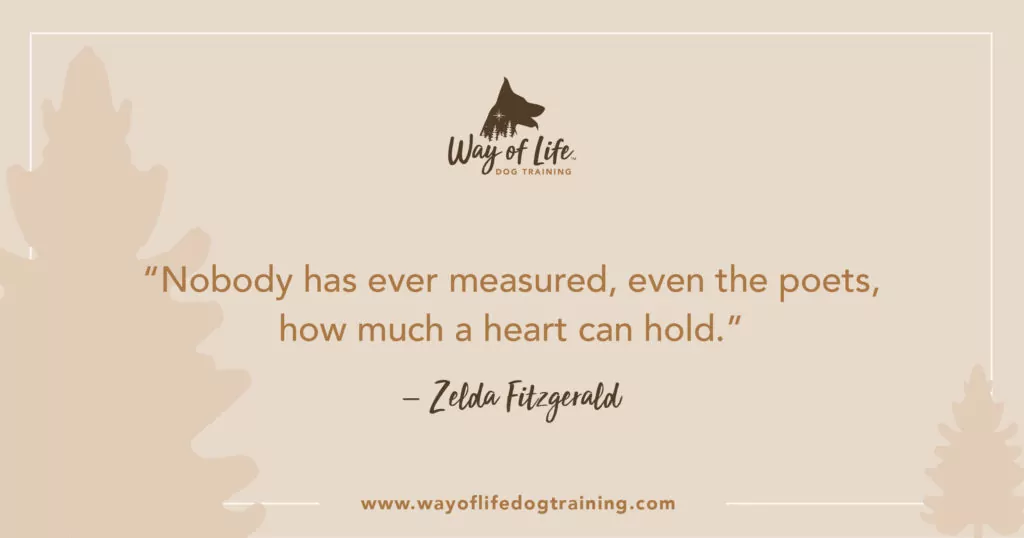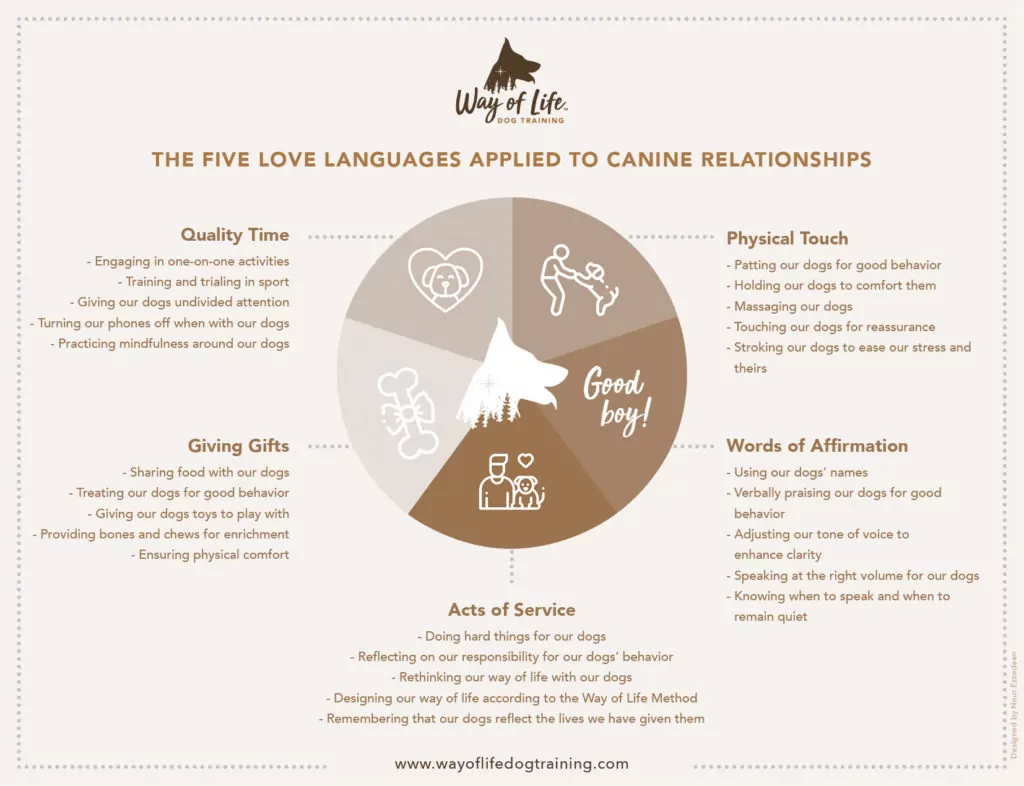
In this newsletter (starting right from the subject line), I am focusing on the importance of learning to love our dogs. Don’t get me wrong, I have no doubt that we love our dogs. The billion-dollar pet industry is an indication, although an imperfect one, of the importance we give pets in contemporary life. We spend unreal amounts of money on our dogs – from food and vetting to toys and entertainment, management and care, and, of course, training.
But with the growing number of dogs that are reactive, fearful, anxious, aggressive, resource guarding, separation phobic, sound phobic, and whatever else ails dogs these days, it’s clear that not all is well in this cherished relationship. Is it possible that, on some level, our dogs do not feel loved, and that’s causing these issues? Could it be that we don’t speak the same love language?
In many ways, the Way of Life Method is about helping us develop a common love language with our dogs. I often say that training is a language that humans speak, but rearing is a language that dogs speak, because this method is ultimately based on an understanding of what dogs do when raising their own pups and what their ancestors did. When we apply what we learn from the philosophy and practice of canine rearing, we develop a common and powerful language with our dogs. As one of my students said in a social media post recently, “The dogs get this method!”
The idea of love languages is not new. You might be familiar with the work of family therapist and counselor Dr. Gary Chapman, author of The Five Love Languages. In human connections – whether romances, work relationships, or friendships – people can experience harmony or conflict depending on whether their respective love languages are compatible.
In human relationships, just as in human-animal relationships, we might think that we are “speaking love” to the other party. But they might be speaking another language entirely and be completely missing the point we are trying to make.
I’ll give you an example of how we can misdirect our love: A new client tells me they’re having difficulty with their new dog. According to the Way of Life Method, there are things I recommend that they do and others they not do when they’re getting started with their new dog if they’re interested in establishing healthy foundations over the long term. And yet I’ll sometimes hear things like this:
“I love my dog on my couch and I like her on my bed. I got a dog for company and love dogs. Do we have to follow all the rules that were set out? Does everything have to be so structured?”
For this person, the love of the dog is having that dog around, on her bed and her couch. Even if they just met. Even if that new dog isn’t ready yet.
For me, love is giving that dog time and space to come around. Love is not about what I want, it’s about what the dog needs. And just as it says in the opening quote, love is about doing hard things so that those that we love can grow. It is about delaying gratification and playing the long game of building a relationship.
Check out our infographic for Chapman’s five love languages and how we might apply them in our daily dealings with our canine companions. Based on this discussion and the five love languages in the infographic, here are a few questions for your consideration:
What do you think is your love language?
Do you have more than one?
What do you think are your dog’s love languages?
How do you think you might become better at “speaking love” with your dog?
